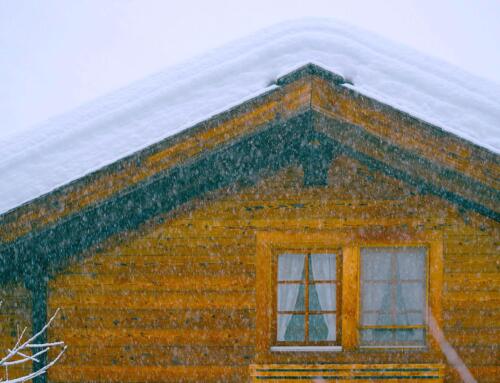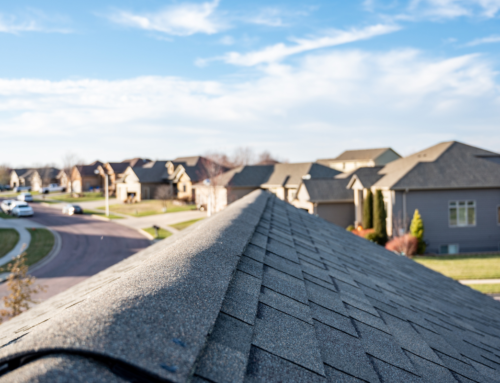Did you know that you should inspect your roof at least twice a year? If you didn’t already know that, you’re not alone. Many Americans don’t give a second thought about what is happening on their roof, but they should. Inspecting your roof doesn’t have to be difficult. In fact, you can inspect your roof in eight simple steps.
Step One: Inspect from the Ground
Walk around the exterior of your home and get a good look at your roof. Of course, you won’t be able to see everything from here, but you’ll be able to get an idea of your roof’s overall health. Look for signs of sagging, aging, and other damage. Note any areas you believe need closer inspection.
Step Two: Get on the Roof
Pull out your ladder and climb on the roof to get a close look at the sealant. Note any damaged sealant around the edges of the counter flashing. The counter flashing is a metal, waterproof strip on your roof, usually located at the gables, or bends, in the roof. If there is damage to the sealant, your roof and the attic underneath it is more likely to have water damage. To see a diagram of the parts of your roof, click here.
Step Three: Identify Damaged Shingles
Keep an eye out for damaged shingles. Usually, they will appear to be buckled or curled. This is caused by warm air from the attic heating up the shingle and making it curl away from the home. When the shingle buckles or curls, it puts your home at a greater risk of weather damage. It also causes poor roof ventilation, increasing heating and cooling bills throughout the year.
Step Four: Look for Missing Shingles
Missing shingles is one of the leading causes of heavy roof damage. Any space on your roof missing a shingle is being directly exposed to the weather.
Step Five: Further Inspect Shingles
Get a good look at the shingles on your roof and determine if there has been any granule loss. Granule loss, or loss of the texture on the shingles, depict aging or severe weather damage. Without these granules, your shingles are no longer protecting your home. If you have serious granule loss, it is time to replace your roof!
Another great way to determine if your roof is suffering from granule loss is to examine your downspouts after it has rained. Usually, after a heavy rainfall, there will be some granule loss. It will look like sand in your downspout. However, once you stop seeing some type of granule loss, you probably need a new roof.
Step Six: Clean Your Gutters
Clear your gutters, overhangs, and downspouts of any debris. Keeping these things clogged will allow for rainwater build up and, ultimately, roof damage. While you are clearing these areas, note signs of rot and rust. Rot and rust on gutters, overhangs, and downspouts can often be a sign of a larger problem.
Step Seven: Look for Clutter
Look for an identify any areas with piles of leaves, moss, or algae. Oftentimes, these areas are where water collects as well. Areas with moss and leaves are infamous for leading to roof leaks and other water damage.
Step Eight: Climb in the Attic
If your home has an attic, enter it to inspect for any signs of damage under the roof. These will normally appear as wet marks. You may even have a steady drip of water. If this is the case, you’ll need professionals to come further inspect your roof.
After you’ve completed your roof self-inspection, review what you’ve found. If there are any areas that may become a problem in the future, don’t wait to act on them. Call a professional to schedule a consultation as soon as possible by calling Lake Orion Roofing at (248) 393-0055.












